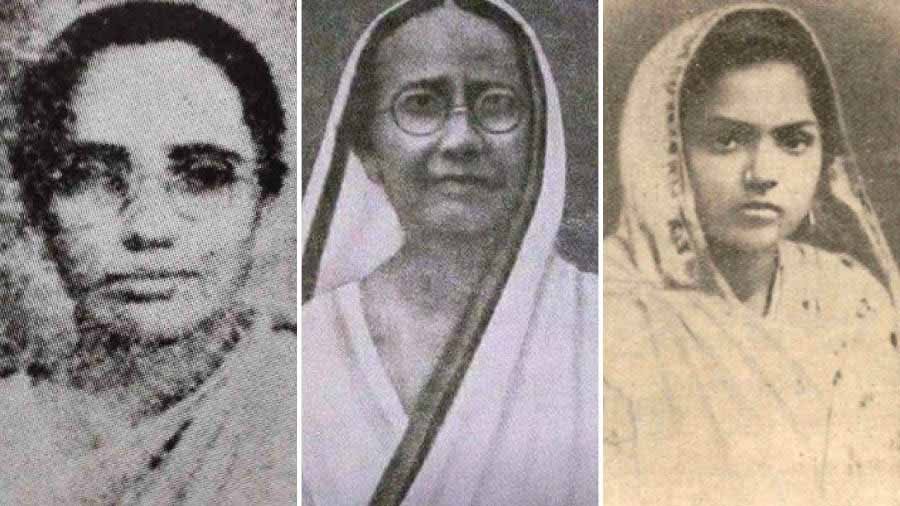Why in the News?
- On August 15, 2025, India celebrated its 79th Independence Day, prompting reflection on the nation’s freedom struggle and the contributions of often-overlooked actors.
- The article emphasizes the role of Bengali women revolutionaries in India’s independence movement, highlighting their dual struggle against British colonial rule and patriarchal societal norms.
- It seeks to recognize these women not as peripheral figures but as foundational architects of freedom, whose stories inspire and redefine the narrative of India’s liberation.
Key Highlights
- Dual Battle: Colonialism and Patriarchy
- In early 20th-century Bengal, women faced restrictive social norms: early marriage, widowhood, discouraged education, and confinement through purdah.
- Revolutionary groups initially doubted women’s capacity for leadership and sacrifice.
- Despite these challenges, women became pivotal forces in both armed struggle and intellectual resistance.
- Armed Resistance and Direct Action
- Pritilata Waddedar led an armed assault on the European Club, Chittagong (1932), a symbol of racial segregation, and embraced martyrdom with cyanide, urging women to participate actively in the movement.
- Kalpana Datta took part in the Chittagong armoury raid, later chronicling women’s roles as equal tacticians and partners in revolution.
- Bina Das attempted to assassinate Governor Stanley Jackson during a university convocation (1932), demonstrating calculated protest rather than desperation.
- These acts showed that women were not mere auxiliaries but central to revolutionary strategy.
- Literary and Intellectual Resistance
- Begum Rokeya Sakhawat Hossain envisioned a society led by women through her novella Sultana’s Dream, advocating reason, peace, and emancipation from patriarchy and colonialism.
- She established schools for Muslim girls in Kolkata and persuaded families to educate daughters, turning education into a revolutionary act.
- Labanya Prabha Ghosh organized reading groups, contributed to nationalist publications like Mukti, and hosted underground meetings, using literacy as a weapon of consciousness.
- Covert Resistance and Logistics
- Kamala Das Gupta managed a women’s hostel while serving as a courier for underground revolutionary groups, hiding fugitives, and smuggling arms disguised as domestic items.
- Nanibala Devi, a widowed Brahmin woman, adopted multiple disguises to support revolutionary activities, endured torture, and maintained silence under interrogation, demonstrating unsung courage.
- Women coordinated secret networks across religious and social lines, even during divisive events like the 1905 Bengal Partition.
- Popular Mass Resistance
- Matangini Hazra (Gandhi Buri) exemplified grassroots resistance during the Quit India Movement (1942).
- Despite being illiterate and widowed, she led a procession, held the tricolour, and was shot multiple times while chanting “Vande Mataram”, highlighting that freedom was the collective right of all Indians, not limited to elites.
Implications
- Redefining Freedom Struggle Narratives
- Challenges male-centric historical accounts of the independence movement.
- Demonstrates that women were central leaders, strategists, and martyrs.
- Empowerment through Education and Intellectual Engagement
- Literacy and education became forms of resistance and empowerment.
- Educating girls disrupted social orthodoxies and built long-term capacity for reform.
- Role of Women in Armed Resistance
- Armed action by women challenged the perception that militancy was male-dominated.
- Martyrdom and courageous acts inspired generations of freedom fighters.
- Underground Networks and Covert Operations
- Women’s involvement in secret logistical networks strengthened revolutionary strategies.
- Domestic spaces and traditional roles were creatively used to subvert colonial authority.
- Social and Cultural Impact
- Resistance challenged patriarchy, caste barriers, and societal norms.
- These stories promote inclusive nationalism, emphasizing that freedom and agency should extend to all social strata.
Challenges and Way Forward
| Challenges | Way Forward |
| Historical neglect of women revolutionaries in mainstream narratives | Incorporate comprehensive accounts in school and university curricula |
| Patriarchal norms limiting women’s public participation | Promote gender-sensitive research and recognition of local heroes |
| Lack of documentation for covert resistance activities | Encourage oral history projects and digitization of personal memoirs and journals |
| Marginalization of literary and intellectual contributions | Support translations, publications, and media recognition of feminist revolutionary literature |
| Societal stereotypes about women’s leadership and activism | Use public commemorations, museums, and media campaigns to highlight contributions |
Conclusion
Bengali women revolutionaries played a transformative role in India’s independence struggle, fighting both colonial oppression and entrenched patriarchy. Their contributions, ranging from armed resistance to intellectual advocacy, redefined the meaning of revolution. Remembering them not as footnotes but as foundational architects of freedom emphasizes the importance of an inclusive historical narrative, inspiring future generations to value justice, equality, and empowerment.
| Ensure IAS Mains Question
Q. Examine the role of Bengali women revolutionaries in India’s independence movement. Discuss how their contributions challenged both British colonial rule and patriarchal societal norms, and the significance of remembering them in modern narratives. (250 words) |
| Ensure IAS Prelims Question
Q. Who among the following led an armed assault on the European Club in Chittagong in 1932 and embraced martyrdom to inspire Indian women? a) Kalpana Datta b) Pritilata Waddedar c) Bina Das d) Matangini Hazra Answer: b) Pritilata Waddedar Explanation: Pritilata Waddedar was a pioneering Bengali woman revolutionary who played a key role in India’s freedom struggle. In 1932, she led a daring armed assault on the European Club in Chittagong, a symbol of British racial discrimination. The attack demonstrated exceptional courage and planning, challenging both colonial authority and societal expectations of women at the time. When faced with capture, she chose martyrdom by consuming cyanide, leaving behind letters urging Indian women to actively participate in the struggle for freedom. Her bravery inspired countless women to break traditional barriers and join the nationalist movement, making her a symbol of courage and resistance. |




